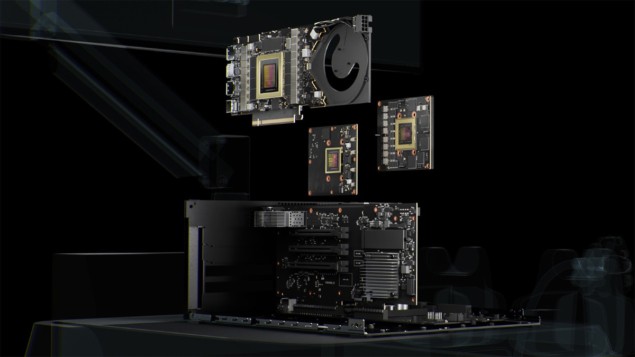
Today, around 30% of all the world’s data is healthcare data, with hospitals generating 50 petabytes of data each year. And by 2025, healthcare data is predicted to be growing at the highest rate of any industry. As such, it comes as no surprise that graphics processing unit (GPU) specialist NVIDIA is developing a host of artificial intelligence (AI) technologies and tools designed to transform healthcare AI.
At NVIDIA GTC, an online GPU technology conference held earlier this week, the company announced new products that aim to change the way that AI powers medical devices. One highlight is the launch of Clara Holoscan, an AI computing platform for the healthcare industry.
“Recent advances in AI, physics machine learning, ray tracing and computing will revolutionize medical instruments,” said NVIDIA founder and CEO Jensen Huang, in his keynote address.
Clara Holoscan allows developers to build applications that process multimodality sensor data, run physics-based models, accelerate AI-based analysis and render high-quality graphics in real time. The new platform provides the infrastructure for end-to-end processing of streaming data from medical devices, seamlessly connecting such devices with edge servers in hospitals.
Most medical devices, from diagnostic imaging systems to surgical assistance instruments, have a workflow that starts with a sensor, incorporates data processing steps and then requires image visualization for human decision-making.
Powered by a new superfast robotics chip, NVIDIA AGX Orin, Clara Holoscan is designed to accelerate each phase of this data processing pipeline. Steps include: transmitting sensor data directly to the GPU; physics-based calculations or AI processing to transform these data into the image domain; image processing, such as segmentation or classification; data processing; and 3D visualization of the device data and resulting predictions.
Importantly, the platform allows developers to run low-latency streaming applications on devices, while exploiting data centre resources for more complex tasks. “Holoscan applications can be deployed fully in-instrument, in the hospital’s data centre or a mixture of both,” explained Huang. “This allows companies to develop applications that require more computing than is in the device or to upgrade the installed base of devices years after deployment.”
Speeding drug discovery
Another area in which AI could make a massive impact is drug discovery, a notoriously time-consuming and data-intensive process.
“Researchers are creating AI models that learn physics and make predictions that obey the laws of physics,” said Huang. “The application of machine learning to improve physics simulation has been growing incredibly.” And this combination of deep learning and physics-based simulation could transform the way that drugs are discovered.

Virtual drug screening involves finding a chemical that will bind to and inhibit the function of a protein in the disease pathway, using molecular dynamic simulations of the atomic forces between the chemical and the protein. Until recently, the 3D structure of a human protein was determined using X-ray crystallography and cryo-electron microscopy. But only 17% of roughly 25,000 human proteins had been decoded, limiting computer-aided drug discovery.
Earlier this year, however, researchers taught AI to predict the 3D shape of proteins from just their amino acid sequences, using DeepMind to decode over 20,000 human proteins overnight. Alongside, AI models are now able to learn the characteristics of known effective chemicals and use these to generate other potentially effective novel drugs.
“More potentially effective chemicals meet hundreds of thousands more protein structures, opening up a gigantic unexplored space of new opportunities,” said Huang. “The opportunity space has increased a million-fold, but this has created a massive molecular simulation bottleneck.”
Enter San Diego-based start-up Entos, a member of the NVIDIA Inception programme, which aims to use machine learning to revolutionize and accelerate drug discovery. Entos has created OrbNet, a physics machine learning architecture that provides a thousand-fold performance increase in molecular simulations. The company is advancing its work using NVIDIA Clara Discovery, a collection of AI tools, models and applications that enable such in silico drug discovery.

AI for more intelligent drug discovery
Entos focuses on identifying drug molecules that could deactivate proteins linked to certain forms of cancer. Huang shared an example simulation of a chemical reaction between a protein and a candidate drug. “This simulation took three hours on one GPU. Without the OrbNet physics machine learning, it would have taken over three months,” he pointed out.
“The future of drug discovery is computational end to end, modelling the disease pathway, the genes involved, the drug–target interactions and the off-target interactions,” said Huang. “With the confluence of million times acceleration, machine learning for protein and chemical structure prediction, and physics machine learning simulation approaches, we are witnessing the dawn of the biology revolution.”



